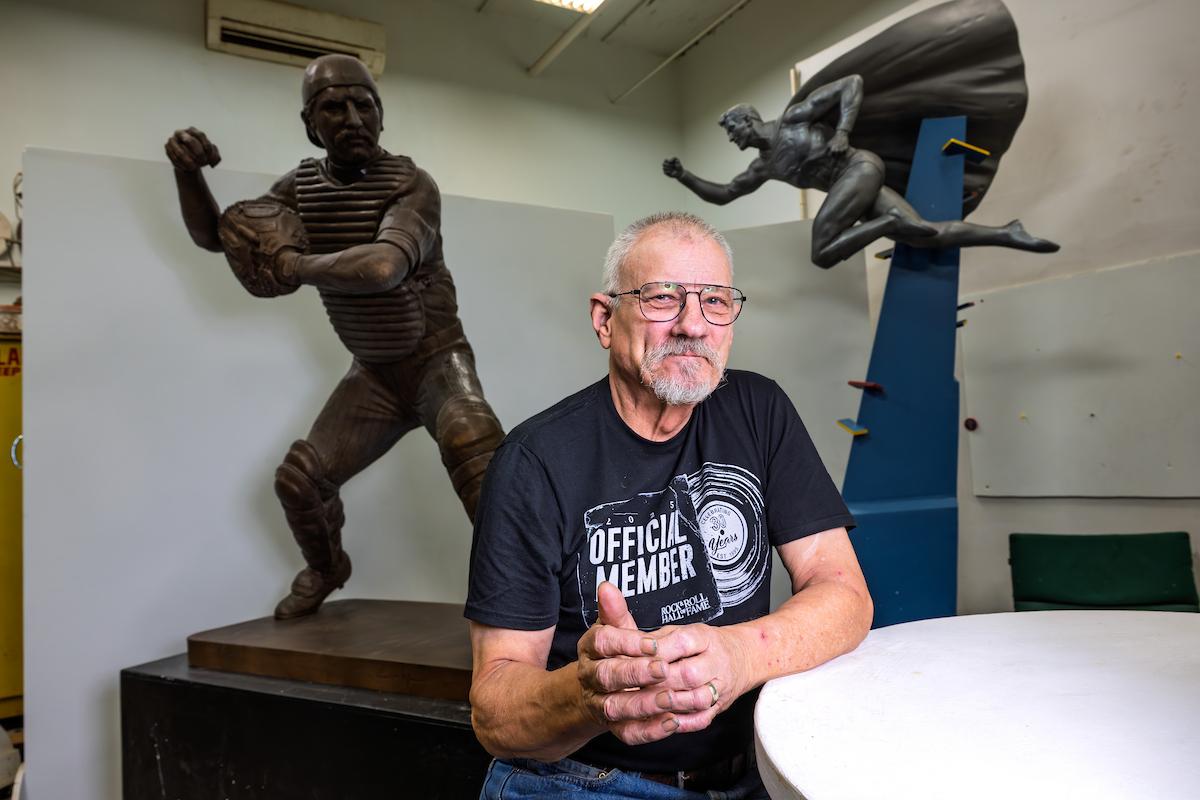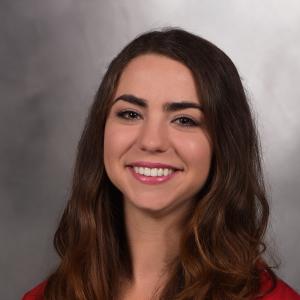Long before David Deming ever picked up a sculpting tool, he was cultivating his creative talents. As a toddler, he would often sneak from his bed and lay down in the hallway, using a crayon to doodle little flowers between the ornate designs on the wallpaper there. That early drive to create was instinctual, playful and persistent. It would eventually evolve into a lifelong pursuit of capturing the human spirit.
“A lot of people can handle realism well. It’s a matter of eye-hand coordination. But capturing the spirit of somebody is the touch that I’ve developed over the years,” said Deming.
This unique ability to freeze a moment in time and resurrect its power through sculpture has long been a hallmark of renowned artist David Deming. Over the past several decades, the Cleveland-based artist has memorialized past presidents, iconic athletes and legendary historic figures, allowing generations to interact with these sculptures and learn the stories behind the people who inspired them.
The work is physical, technical and specific, and Deming approaches each commission with a dogged determination to do justice to the person and the moment they are experiencing. His latest sculpture was installed in late September at Â鶹ľ«Ńˇâ€™s Schoonover Stadium: a powerful bronze tribute to legendary Yankee catcher – and Â鶹ľ«ŃˇBaseball great – Thurman Munson.
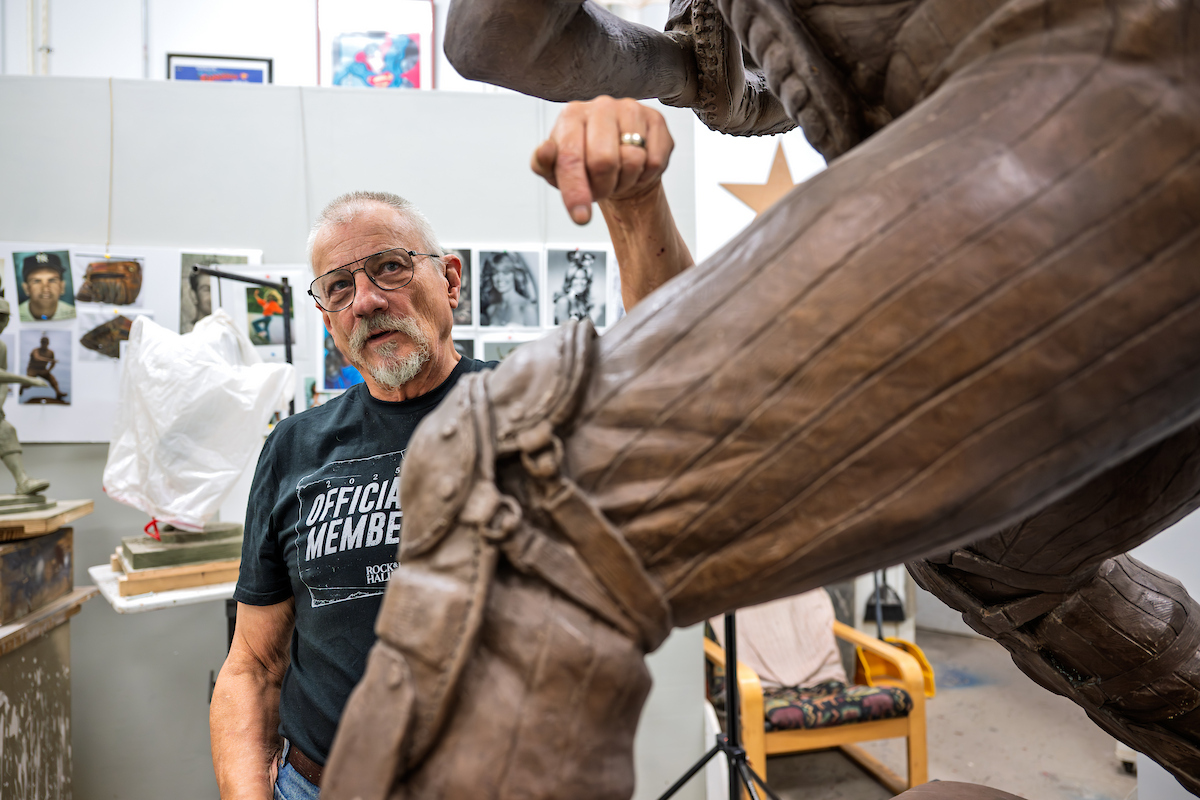
While Deming mentioned that his favorite project is always the one he’s currently working on, he also admitted to feeling a personal connection to the Thurman Munson sculpture. Like Munson, Deming was also a catcher, playing through sophomore year of high school. That sense of shared experience helped Deming understand what Munson might have been thinking in this moment.
“He’s throwing down to second base. He just tossed his head gear off, and he’s getting ready to rifle that ball. Usually, the ball is pulled out of the glove, cocked and BAM! It’s sort of fun reliving that because I did it myself,” he said.
The Munson monument was revealed just weeks after Deming had taken to the national stage with the unveiling of his statue of Superman. The larger-than-life Man of Steel, who originated in Cleveland nearly 90 years ago stands, or flies, actually, on the corner of Ontario Street and St. Clair Avenue in the city.
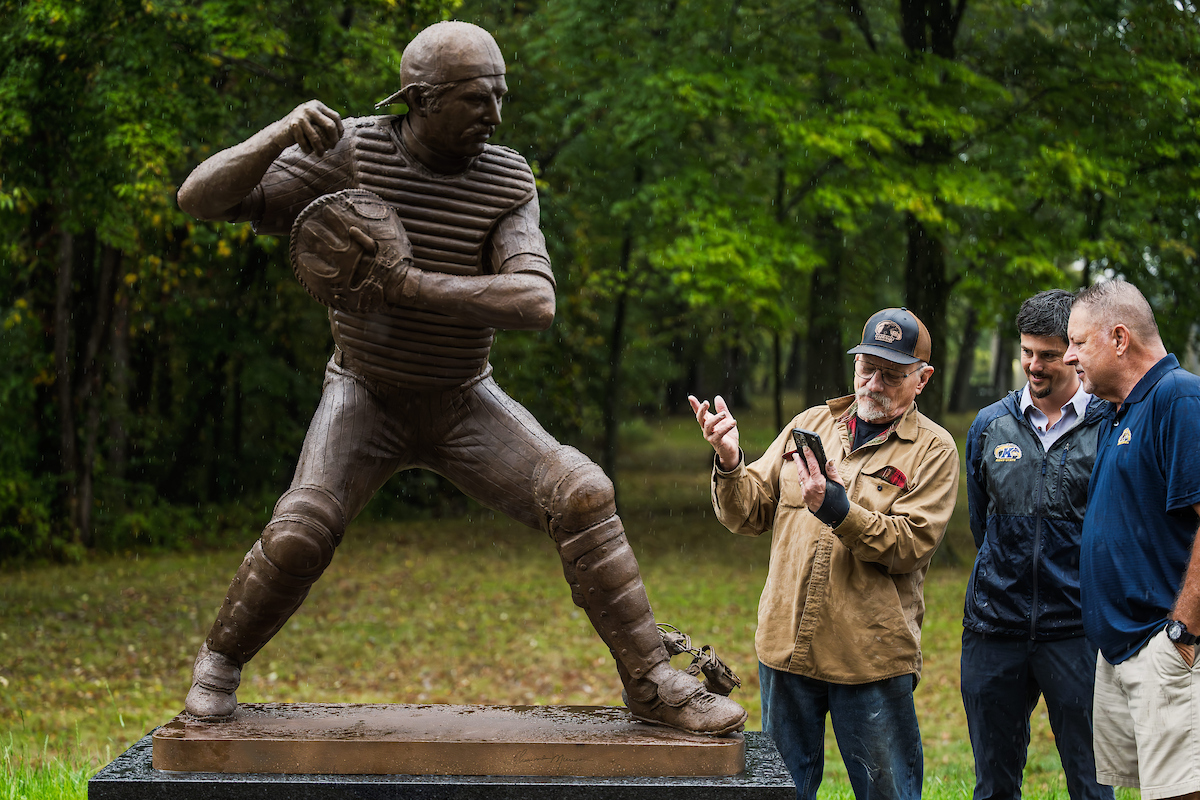
On the Kent Campus, every detail of the sculpture, down to the laces in the glove, is meticulously crafted. Deming was able to study Munson’s actual gear, which the Yankees had given to Â鶹ľ«Ńˇafter he died. The culmination of all those details paired with the spirit captured in the sculpture was enough to bring Diana Munson, the catcher’s widow, to tears when she paid Deming a visit in his studio to view the sculpture.
“I hope when people get to walk around this, they can absorb who the character was that we’ve captured here,” said Deming of the statue. “There have been and will continue to be wonderful people coming to Â鶹ľ«Ńˇ. And once you leave the university, you have a whole life ahead of you to prove your worth. This is a guy who did that – and died tragically – but will always be remembered.”
The statue was commissioned through private support from many donors, with lead gifts from Tom, ’74, and Barbara Cole, Howard, ’74, ’75, and Barbara Fleischmann, ’75, and Dave, ’80, and Adrian Edmonds. The names of all donors are included on the statue.
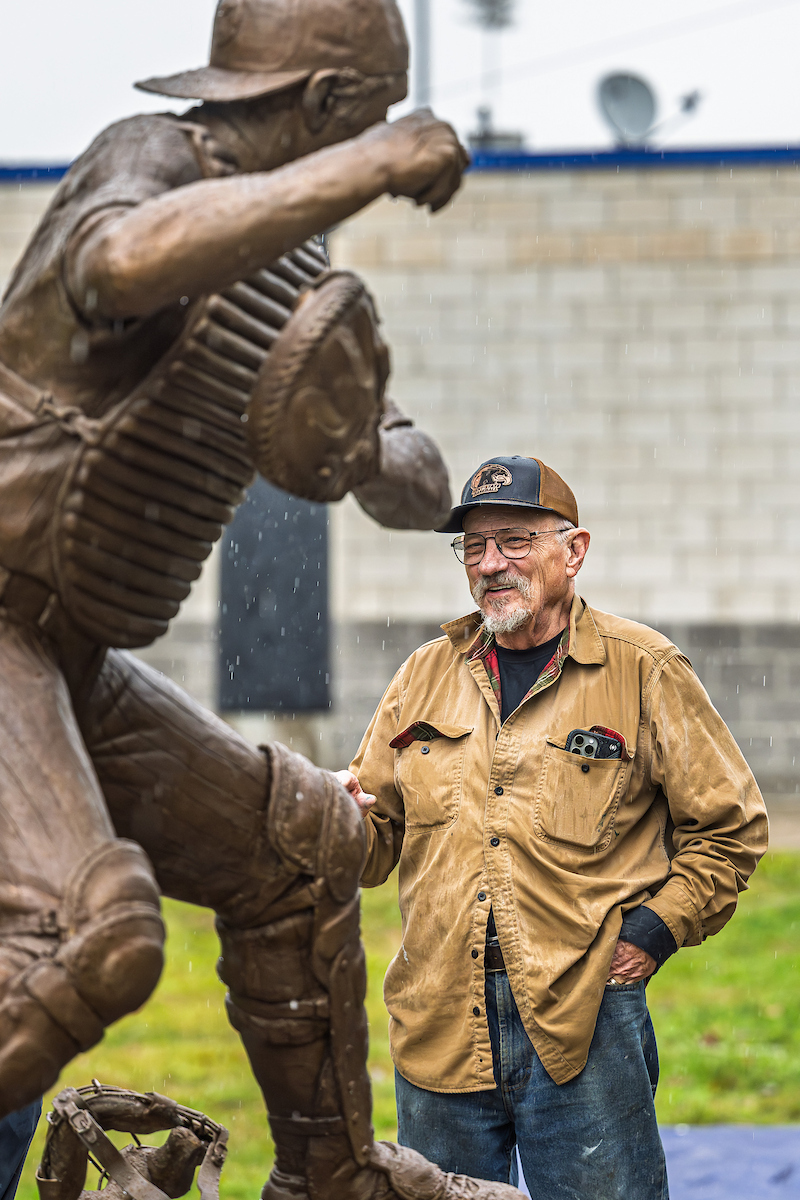
About the Artist:
David Deming earned both a bachelor’s and master’s degree in fine arts from the Cleveland Institute of Art. He also attended the Harvard Institute for Educational Management in 1999. Deming taught at Boston University and the University of Texas at El Paso. He also taught for 26 years at University of Texas Austin, where he served as chair of the Department of Art and Art History and dean of the College of Fine Arts. From 1998-2021, he served as president of the Cleveland Institute of Art.
Deming is best known for his figurative sculpture, although he also creates abstract works. He has exhibited his work in more than 100 competitive and invitation exhibits nationally and internationally, many of which have been one or two-person exhibitions. Subjects of his work include George H. W. and Barbara Bush, Jim Brown, Frank Robinson, Jim Thome, Al Lerner and others.
